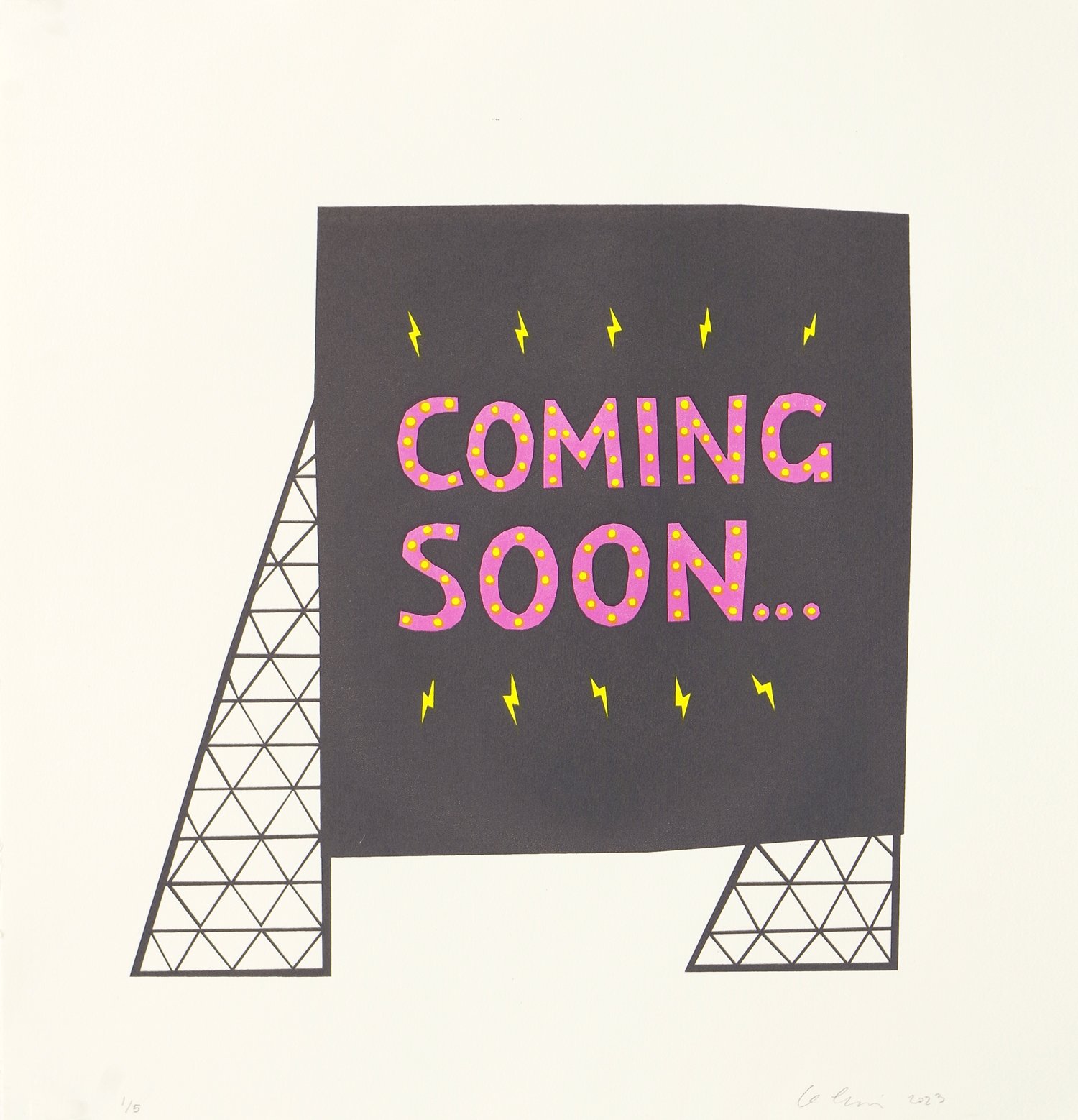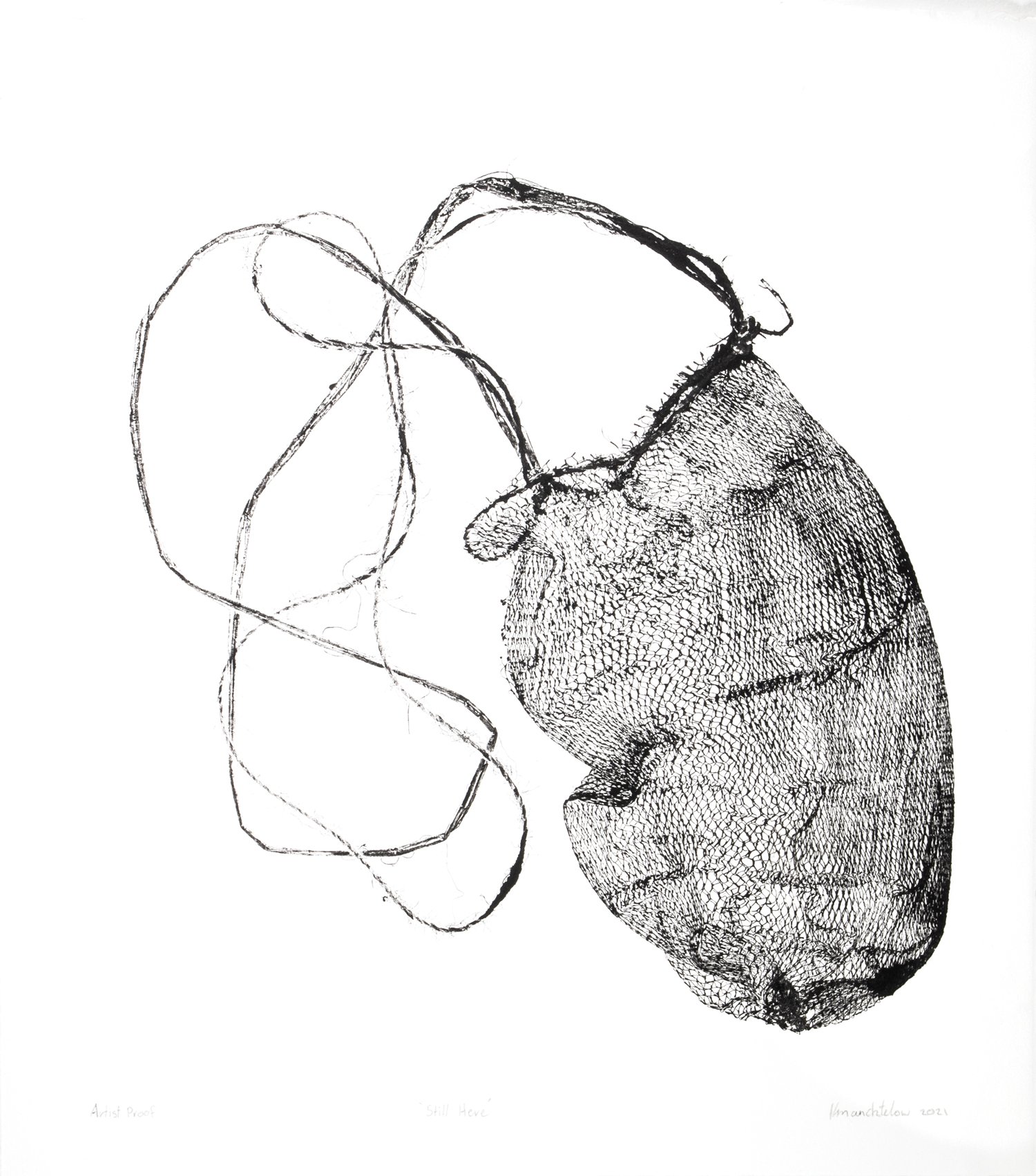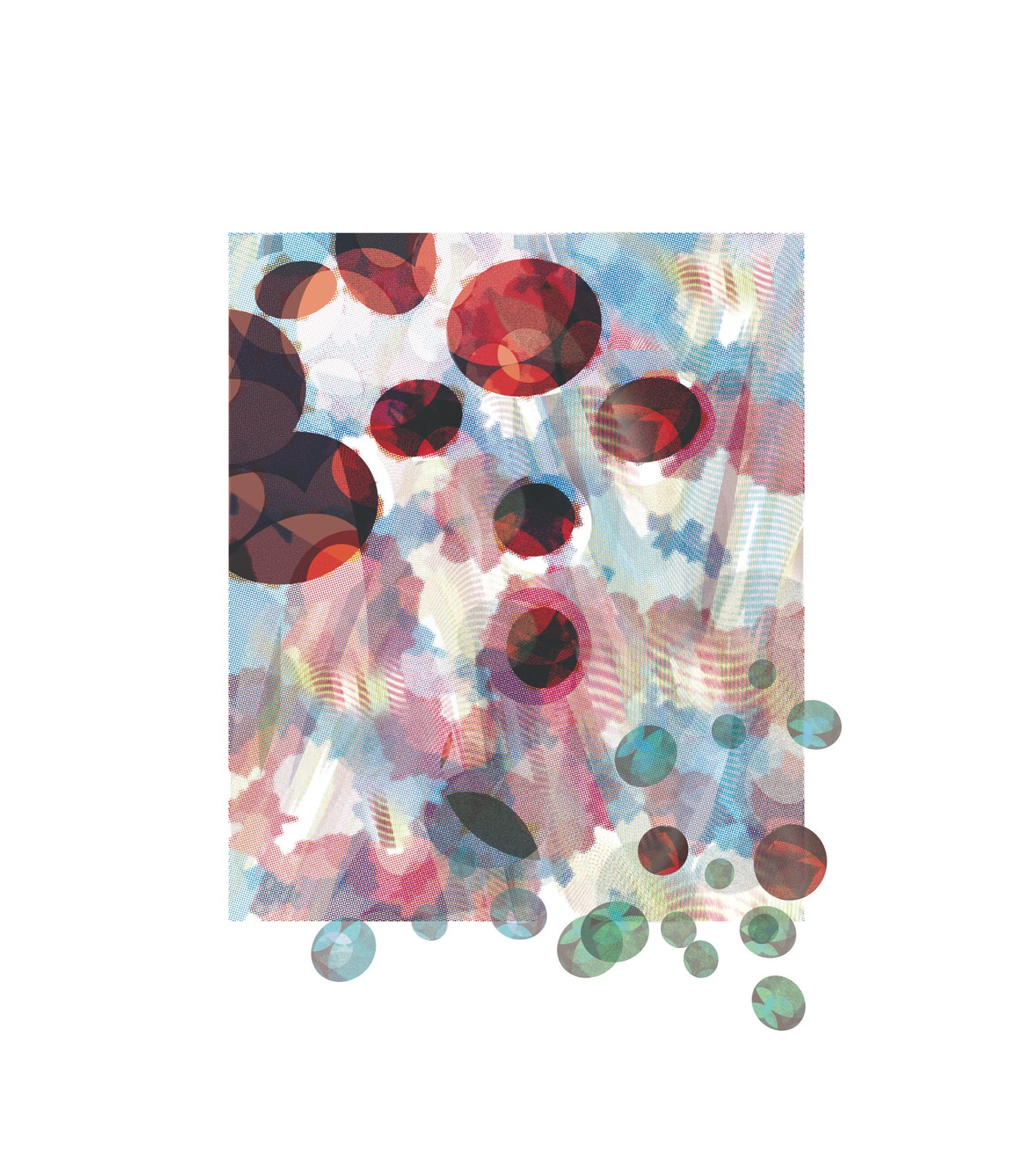Conventions and Technologies of Printmaking
The medium of printmaking has a long and significant history, particularly in the Southeast Asian region as its origins in the Han Dynasty in China date back to 206 B.C. to 220 A.D., with the earliest known example, a woodblock print on silk screen. Historians have linked printmaking processes such as engraving to cave paintings and other primitive mark making. However, the most common ideation of the dawn of printmaking was the processes of making images in multiples. Students are encourage to briefly investigate the history of printmaking here
Malcom Smith, Coming soon 2023, screenprint, 50 x 45 cm
National Art School
Theresia Agustina Sitompul, Triangle 2023, carbon print, 50 x 35 cm
Institut Seni Indonesia Surakarta
Think and Discuss:
Disruption: Discourse and Exchange illustrates the variation in printmaking conventions and technologies that have been introduced throughout history to create multiple editions of a single image. Using the Met Museum website investigate the ways in which images are created using the processes of etching, woodcut, engraving, lithograph and screen printing.
How can images be manipulated through the use of different materials? (eg wood, metal, silkscreen).
Make a list of the qualities of each process and the image it creates.
How has the introduction of digital technology affected the printmaking practice? Refer to positive and negative effects.
Kyra Mancktelow, Still here 2022, relief print, 50 x 45 cm
Queensland College of Art
Mittheera Leelayudthyothin, Disruption 2023, digital print, 50 x 45 cm
King Monkut’s Institute of Technology Ladkrabang




